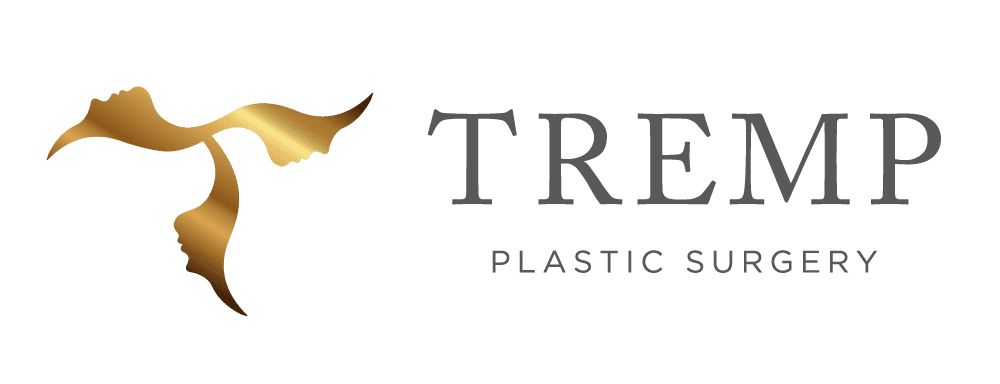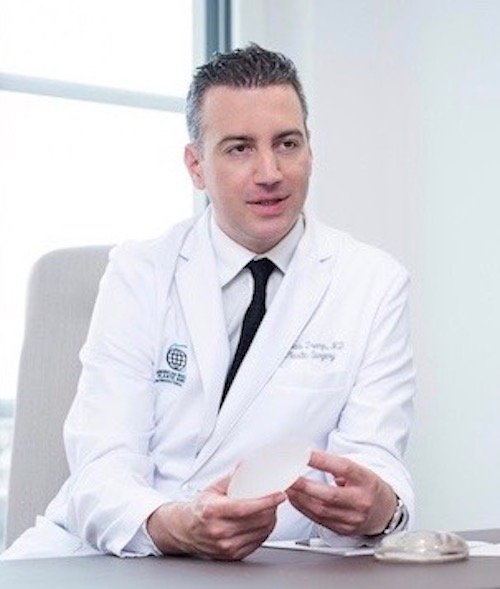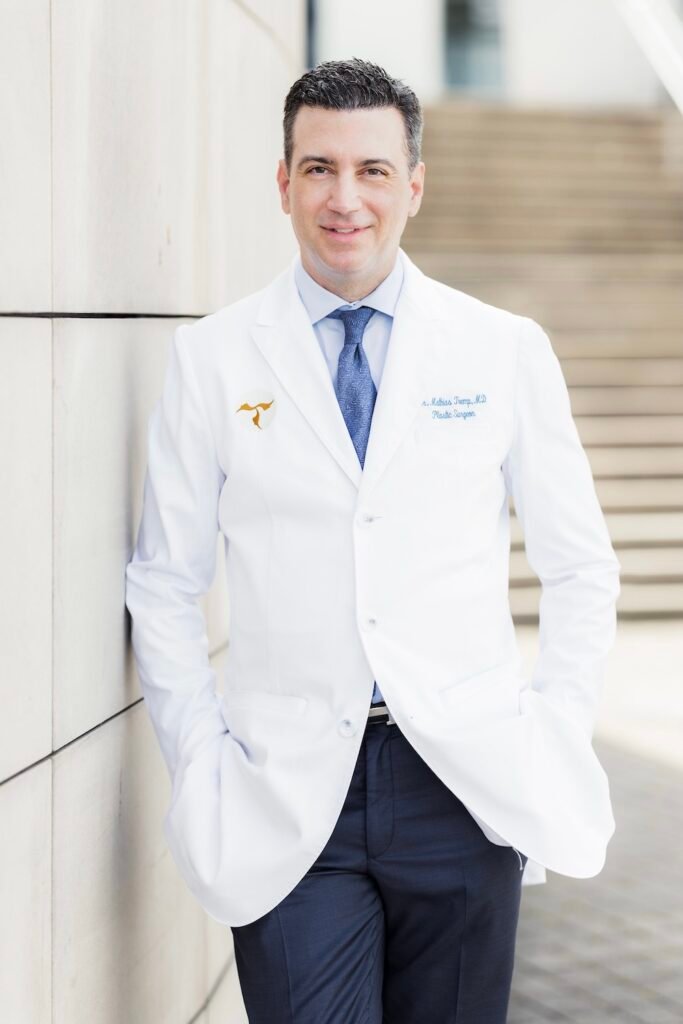Procedure of the counselling interview
During the first session, the patient’s expectations and wishes are discussed. During the consultation, PD Dr. med Mathias Tremp explains the preferred breast surgery methods and all possible risks.
Furthermore, an initial medical history is taken and all prerequisites and important information and questions for the breast correction are clarified.
Trust and experience as an important prerequisite
During the consultation, patients can get to know PD Dr. Tremp and his team better and confirm their choice of clinic.
Trust and the choice of an experienced specialist are the prerequisites for a satisfactory result of the operation.
3D simulation of breast correction?
With the help of the 3D simulation, the result of an aesthetic breast correction can be shown. The simulation can be used to select the right method for breast correction.
Furthermore, the result of a corrected breast is simulated by means of inserts in a support bra. A feeling for the desired size and the expected weight can be tested. In addition, pictures (before and after) of successfully operated patients help to show the result.
Can you breastfeed with breast implants?
In any case, it should be clarified during the consultation whether the patient plans to breastfeed children. The technique for the breast surgery will be determined accordingly.
If the incision for the implant is made above the armpit or under the breast, the ability to breastfeed is not restricted. However, if the implant is placed over the nipple area, certain restrictions are possible despite the most modern techniques.
If breast augmentation is desired after breastfeeding, this is possible at the earliest 6 months after the end of breastfeeding.
Can implants slip after breast augmentation?
In exceptional cases, it is possible for one or even both breast implants to slip out of place after a breast augmentation.
With round breast implants, there is a margin for slight rotation without affecting the shape of the breast. Anatomical implants that are teardrop-shaped are considered more risky for slippage.
With all types of implants, professional treatment is required to ensure the long-term stability of the breast implant. The pocket where the implant is inserted, which is optimally prepared in the breast ops, is sometimes very crucial. Placing the implant under the large pectoral muscle can relieve the connective tissue and improve stability.
The patient can also take care of a stable shape of the breast implants herself. All patients should rather slowly return to everyday life. Heavy lifting or jerky movements should be avoided. And sports activities should be avoided for 4 to 6 weeks.
What is the lifespan of breast implants?
For a long time it was said that breast implants had to be changed after 15 years.
With the new implants, if there are no problems during the operation, further surgery is no longer necessary.
Can an enlarged breast become saggy again later?
It is important to note that the inserted implant does not change the natural ageing process of the operated breast. Even with an implant, the breast tissue changes over time. Even breasts that have been augmented with an implant can sag with age, after pregnancy or after significant weight fluctuations.
Risks with silicone breast implants?
Modern breast implants are made of high-quality materials and consist of several layers. Cracks or leakage of the silicone gel are extremely unlikely.
Provided the operation is carried out professionally, the implant does not cause any risk to the patient’s health.
What are the general risks of a surgical breast correction?
Every operation involves risks. However, the risks of a surgical breast correction can be minimised. With a plastic surgeon who has many years of experience, the planned procedure brings low risks.
Despite experience and the greatest care, occasional problems can occur during or after the operation. During breast correction, fine skin nerves in the breast are cut. This can cause numbness in the skin and nipple.
Certain risks, such as bruising and bleeding or infections, cannot be completely ruled out. Very rarely, disturbances in blood circulation can lead to tissue, e.g. in the area of the nipples, not healing. In this case, the affected tissue would have to be replaced by the body’s own skin with a new operation.
Can breast implants lead to diseases?
Very strict guidelines apply to new, modern silicone breast implants throughout Europe. The fear of getting sick from a silicone implant is therefore unfounded.
In the case of a mammogram, the attending physician should be informed that the results of the breast examination can be evaluated accurately.
One exception is a rare form of lymph node cancer (ALCL). However, this rarely occurs among millions of female implant recipients. The risk of developing the disease is extremely low. The options in the event of a possible disease are very good: in most cases it is sufficient to remove the implants and surrounding scar tissue.
When should patients remove or change breast implants?
In principle, it is not necessary to change or remove the breast implants. Removal is recommended in case of capsular fibrosis or rupture of the implant.
If the tissue around the implants hardens, the silicone inserts should be removed or replaced.
Who covers the costs of removing or changing a breast implant?
In most cases, the costs for prosthesis and capsule removal are covered by the insurance company. However, patients have to pay for aesthetic breast correction themselves.
Tips for choosing a doctor for breast augmentation in Switzerland
You should take enough time to choose a suitable surgeon. Discuss your ideas and expectations of a breast correction with your confidants first. Also ask your gynaecologist which plastic surgeon is recommended for the desired breast correction.
The “Specialist in Plastic, Reconstructive and Aesthetic Surgery” is a recognised specialist title. The specialist title is obtained after completing several years of further training after graduating from medical school.
During the practical period, the surgeon must perform numerous procedures under supervision. After the practical experience and the theoretical training, the specialist examination is taken. A plastic surgeon knows all the procedures of an aesthetic operation from his close cooperation with different specialists.
Other designations such as “cosmetic surgeon” or “aesthetic surgeon” are not protected titles.


